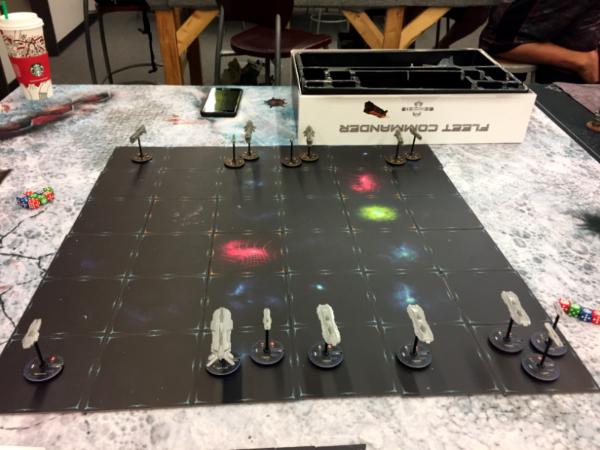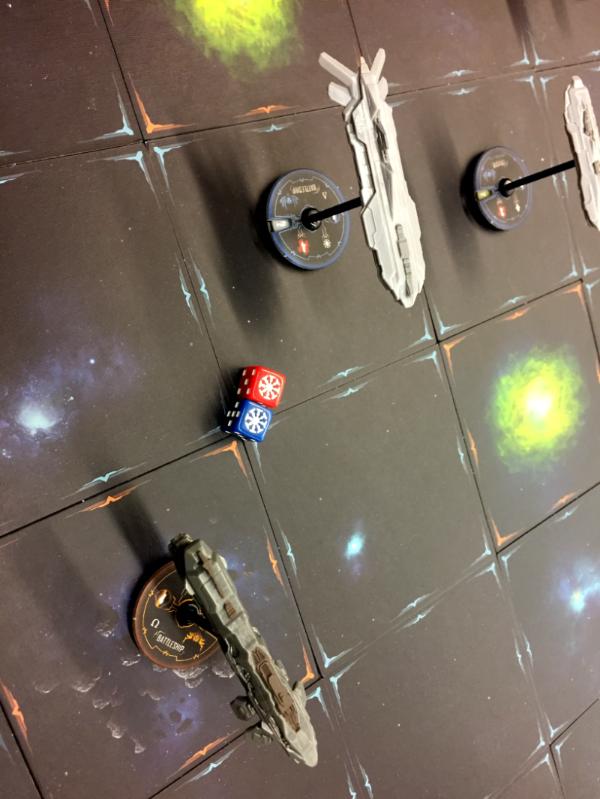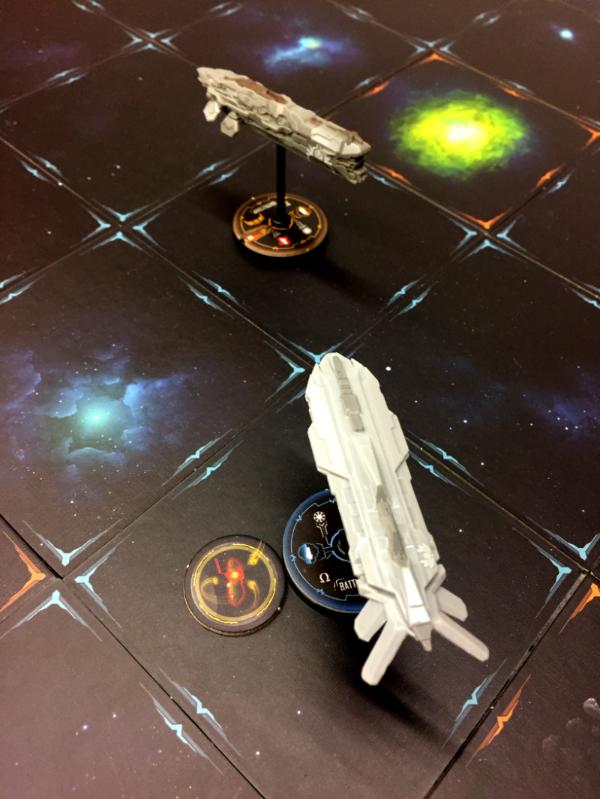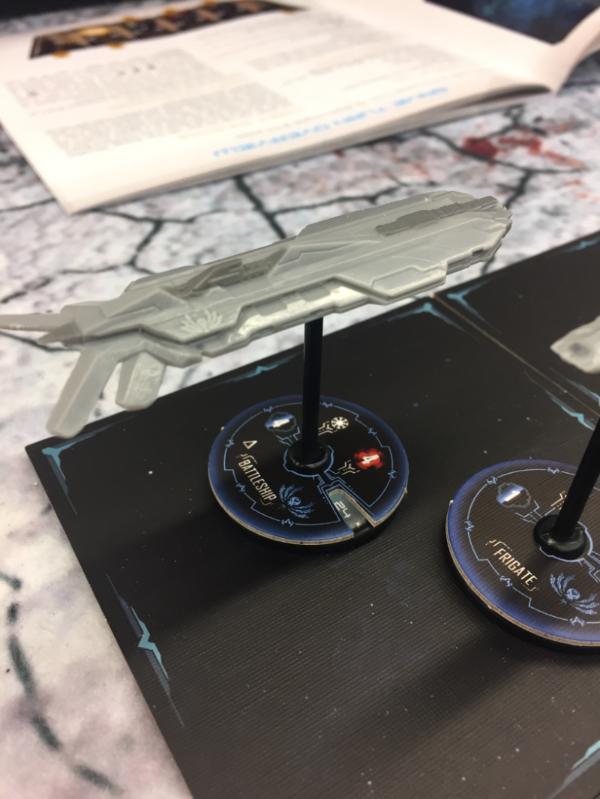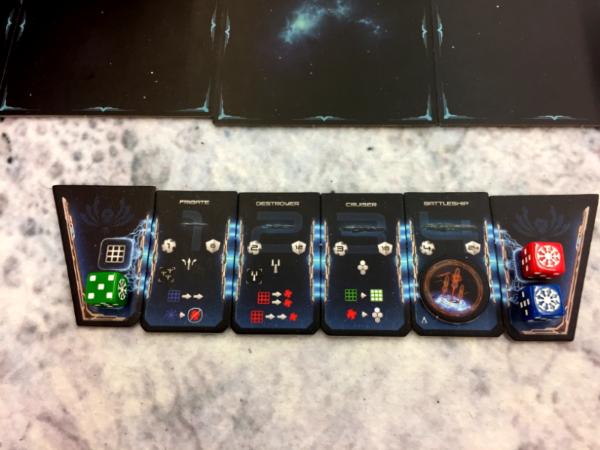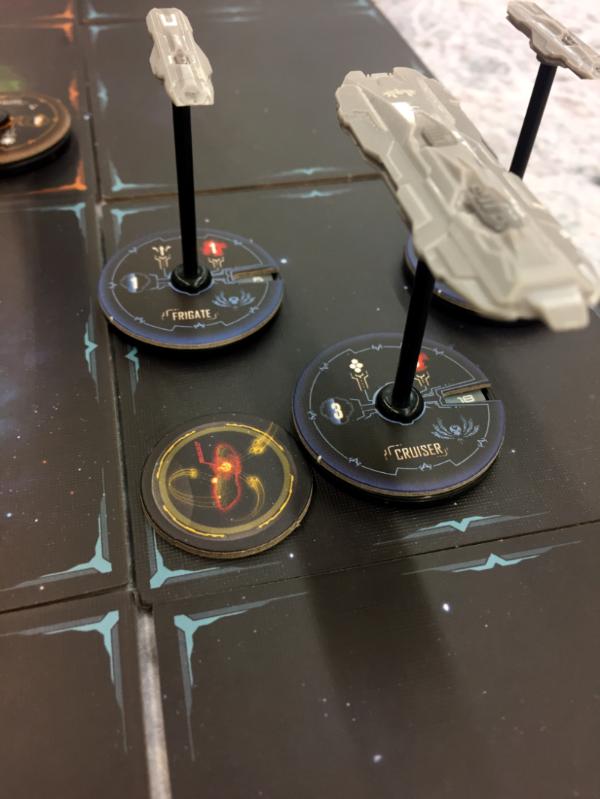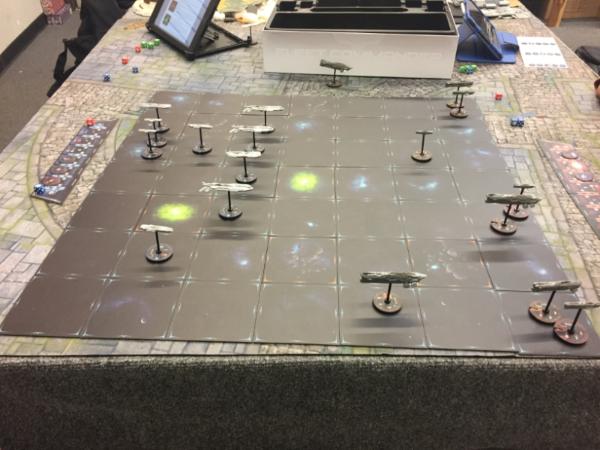Hi all! Here is Landlubber’s impressions for the game Fleet Commander. This has been reposted from the MBS forums. See the original post here).
Forum member BrdingPrty1 and I have met up a couple times in the past few weeks to try out his copy of Fleet Commander, by Capsicum Games.
This won’t be a full review, as we only were able to play a couple of games, but I wanted to put down my initial impressions of the game and share a few pictures while it’s still fresh in my mind.
Fleet Commander is played on a “board” made up of tiles (with a minimum playing field of 5×5 tiles, I think) that represent space; the tiles are double-sided, maybe 4 inches on a side, with one side being empty space and the other containing some sort of stellar anomaly (asteroid field, gas cloud, debris field, gravitational wave, etc). The ships are hard plastic and come pre-painted in simple but serviceable paint schemes. BrdingPrty’s copy of the game (he has Fleet Commander: Genesis, from the Kickstarter) had four classes of ships for each of the two factions: frigates, destroyers, cruisers, and battleships. (The two factions are the League of Phoebe and the Hegemony of Amycles. I haven’t looked closely enough to know the backstory behind each faction, so I won’t go into that here.)
Actions in the game are determined by custom six-sided dice, which come in three colors: red (for offensive actions), green (for defensive actions), and blue (for movement actions). At the start of the turn, you roll three dice in any combination of colors, and these will determine the actions you can take with your ships. The dice have custom symbols that represent shooting, defense, or movement in one of three ways: orthogonal (forward/backward/left/right), diagonal (forward/backward), or omnidirectional. For the most part, all shooting and movement only reaches one tile away from your current tile. For example, a red orthogonal die allows you to shoot at targets in the immediate forward, behind, left, or right tiles from the current tile; a green diagonal die allows you to negate one attack coming into your tile from a diagonal direction; an omnidirectional blue die allows you to move one tile in any direction (diagonal or orthogonal).
In the Genesis copy of the game, each ship type for each faction is a mirror of the other–all stats are the same for destroyers, cruisers, etc. There is variation in the battleships, which can be equipped with one of nine different special weapons. In order to use the special weapon, you must have two “banked” dice on your command board with the special “wheel” symbol.
For example: in the image above, my battleship (the light gray ship at the top of the picture) fired it’s special weapon at BrdingPrty’s battleship. The weapon I had equipped on that ship was the Tractor Beam, which allows me to grab a friendly or an enemy ship up to two squares away and move it one square in any direction. I chose to grab his battleship and sling it into the asteroid field, causing him to have to roll for damage (it did take some damage) and putting it out of the fight until he spent a movement die to get it out of the asteroids.
As another example, in the image above, BrdingPrty’s battleship (in the background) was equipped with Drones, which basically hound the target ship, causing two points of damage at the start of each turn and following the target around until it is either destroyed, the parent battleship is destroyed, or the target spends an omni-directional attack die to run the little buggers off. Some pretty cool options with the battleships!
Detail on the ships isn’t stunning–certainly not as detailed as most of the naval miniatures games currently on the market, but they are more detailed than most boardgaming pieces I’ve seen. Stats are on the ship’s base, similar to Star Wars Armada and Dropfleet Commander–Class (represented by a number–sort of like a point cost or build rating), Firepower (also represented by a number–denotes the amount of damage a ship will do when it attacks), Special Ability (denoted by a symbol), and Hull Points (again represented by a number–on a dial under the base).
Here’s a League of Phoebe battleship:
And a Hegemony of Amycles battleship (with a Hegemony frigate behind it):
Overall, this is a fun game! There’s a little more depth to it than first meets the eye, and there are some neat options for hidden deployment, unmapped battlefields, etc. There are even rules for jump gates that run between combat zones, giving players the opportunity to play across a few different battlefields in one single game.
I’ll see about doing a more detailed review on the MBS podcast in the next few months. Here are a few more pics:
Many thanks to BrdingPrty for breaking the game out and playing. BrdingPrty, if you have any thoughts to add to what I’ve written above, please chime in.
Thanks for reading!

